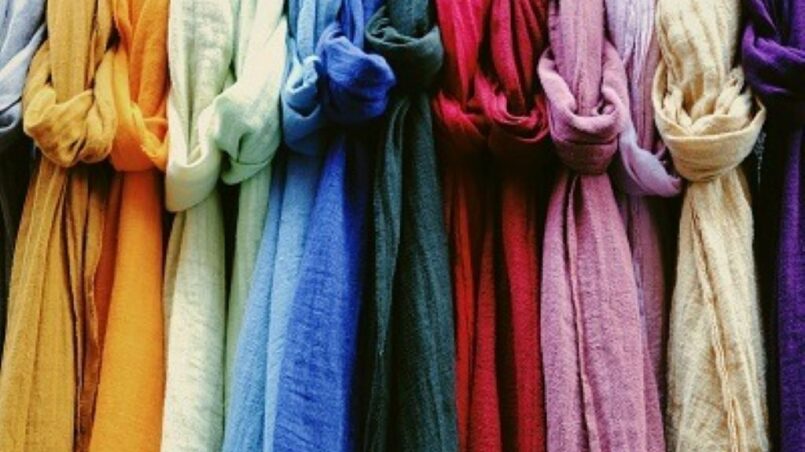Heat rash can turn a beautiful summer day into an uncomfortable experience. Therefore, choosing the right clothing becomes essential for maintaining comfort and skin health. At Dress 24h, we understand how fabric choice impacts your daily comfort, especially during warmer months.
Heat rash, also known as prickly heat, occurs when sweat ducts become blocked. This condition affects millions of people worldwide during hot weather. However, selecting appropriate fabrics can significantly reduce your risk of developing this irritating skin condition.
The best fabric for hot weather depends on several factors including breathability, moisture-wicking properties, and skin sensitivity. Additionally, understanding fabric characteristics helps you make informed decisions about your wardrobe choices.
Understanding Heat Rash and Fabric Connection
Heat rash develops when excessive sweating blocks pores and traps moisture against the skin. Consequently, small red bumps or blisters appear, causing itching and discomfort. The fabric you wear directly influences how much your skin can breathe and regulate temperature.
Synthetic materials often trap heat and moisture, creating ideal conditions for heat rash development. Meanwhile, natural fibers typically allow better air circulation. However, not all natural fabrics perform equally well in preventing heat rash.
Top Fabric Choices for Heat Rash Prevention
Cotton: The Classic Choice
Cotton remains one of the most popular options for hot weather clothing. This natural fiber absorbs moisture effectively and allows air to circulate freely. Moreover, cotton feels soft against sensitive skin and rarely causes allergic reactions.
Lightweight cotton varieties work particularly well for heat rash prevention. Additionally, organic cotton options provide extra gentleness for those with sensitive skin conditions.
Linen: Ultimate Breathability
Linen offers exceptional breathability, making it ideal for extremely hot conditions. This natural fiber has a loose weave that promotes maximum air circulation. Furthermore, linen becomes softer with each wash, improving comfort over time.
However, linen wrinkles easily and may require more maintenance than other fabrics. Despite this drawback, many people consider linen the superior choice for preventing heat rash.
Bamboo: Modern Innovation
Bamboo fabric combines natural origin with modern performance features. This material naturally resists bacteria and fungi while providing excellent moisture-wicking properties. Additionally, bamboo fabric feels incredibly soft and smooth against the skin.
The sustainability aspect of bamboo makes it appealing to environmentally conscious consumers. Moreover, bamboo clothing often costs less than premium cotton alternatives.
Merino Wool: Surprising Option
Merino wool might seem counterintuitive for hot weather, but this fine wool actually regulates temperature effectively. The natural fibers wick moisture away from skin while remaining odor-resistant. Therefore, lightweight merino wool garments work well for active individuals.
However, wool allergies make this option unsuitable for some people. Additionally, merino wool typically costs more than cotton or synthetic alternatives.
Fabrics to Avoid for Heat Rash Prevention
Synthetic Materials
Polyester, nylon, and acrylic fabrics generally trap heat and moisture against the skin. These materials create perfect conditions for heat rash development. Consequently, avoiding synthetic clothing during hot weather helps prevent skin irritation.
However, some advanced synthetic fabrics incorporate moisture-wicking technology. These technical fabrics may work better than traditional synthetics but still fall short of natural alternatives.
Heavy Cotton Blends
Thick cotton blends with synthetic materials often combine the worst aspects of both fabric types. These blends may restrict airflow while retaining moisture. Therefore, checking fabric composition before purchasing becomes crucial for heat rash prevention.
According to the American Academy of Dermatology, proper clothing choice plays a vital role in preventing heat-related skin conditions.

Fabric Care Tips for Maximum Effectiveness
Washing Considerations
Proper care maintains fabric breathability and effectiveness. Using gentle detergents preserves natural fiber properties while harsh chemicals can damage fabric structure. Additionally, avoiding fabric softeners helps maintain moisture-wicking capabilities.
Hot water washing may shrink natural fibers and reduce their effectiveness. Therefore, following manufacturer care instructions ensures optimal performance and longevity.
Drying Methods
Air drying preserves fabric integrity better than high-heat machine drying. Natural fibers maintain their structure and breathability when dried gently. Moreover, avoiding over-drying prevents fabric stiffness that might irritate sensitive skin.
Choosing the Right Fit
Loose-fitting clothing allows better air circulation around the body. Tight garments trap heat and moisture, increasing heat rash risk regardless of fabric choice. Therefore, selecting appropriate sizes becomes as important as choosing the right material.
Seam placement also affects comfort levels. Flat seams reduce friction and irritation, particularly important for people prone to heat rash. Additionally, tagless clothing eliminates another potential source of skin irritation.
Special Considerations for Different Activities
Exercise and Sports
Active individuals need fabrics that handle heavy perspiration effectively. Moisture-wicking natural fibers work better than cotton for intense physical activities. However, the Mayo Clinic recommends changing out of sweaty clothes immediately after exercise.
Professional Settings
Office environments may require formal clothing that still prevents heat rash. Lightweight wool blends offer professional appearance while maintaining breathability. Additionally, layering lightweight natural fabrics provides temperature control throughout the day.
Seasonal Fabric Strategies
Spring and summer obviously require the most attention to heat rash prevention. However, indoor heating during winter can also create conditions for heat rash development. Therefore, having breathable clothing options year-round helps maintain skin health.
Transitional seasons benefit from layering strategies using natural fibers. This approach allows temperature adjustment without compromising skin comfort.
Budget-Friendly Options
Quality heat rash prevention doesn’t require expensive designer clothing. Basic cotton and linen garments from budget retailers often perform as well as premium alternatives. However, investing in higher-quality natural fibers may provide better durability and long-term value.
Shopping end-of-season sales helps build a wardrobe of breathable clothing without breaking the budget. Additionally, thrift stores often carry natural fiber clothing at fraction of retail prices.
Conclusion
Preventing heat rash starts with choosing appropriate fabrics that allow your skin to breathe and stay dry. Cotton, linen, and bamboo emerge as top choices for their natural breathability and moisture-management properties. Meanwhile, avoiding synthetic materials and tight-fitting clothing further reduces your risk of developing heat rash.
Remember that proper fabric care and appropriate fit complement your material choices. Therefore, combining quality natural fibers with good hygiene practices and suitable clothing sizes provides the best protection against heat rash. Making informed fabric choices helps you enjoy warm weather activities while maintaining comfortable, healthy skin.
Frequently Asked Questions
What is the single best fabric for preventing heat rash? Linen offers the best breathability and air circulation, making it the top choice for heat rash prevention. However, lightweight cotton provides excellent results with easier care requirements.
Can synthetic fabrics ever be good for hot weather? Advanced moisture-wicking synthetic fabrics designed for athletic wear can work better than traditional polyester. However, natural fibers generally perform better for heat rash prevention in most situations.
How tight should clothing be to prevent heat rash? Clothing should fit loosely enough to allow air circulation around your body. Tight garments trap heat and moisture, increasing heat rash risk regardless of fabric choice.
Does thread count matter for cotton clothing? Lower thread count cotton fabrics typically offer better breathability than high thread count alternatives. Percale weaves provide better air circulation than sateen for hot weather wear.
Should I avoid all clothing with synthetic blends? Small percentages of synthetic fibers in natural fabric blends may be acceptable. However, avoid garments where synthetic materials make up more than 20% of the fabric composition for best heat rash prevention.
Read More:
HOW TO USE CLOTHES IN YOUR FAVOR



